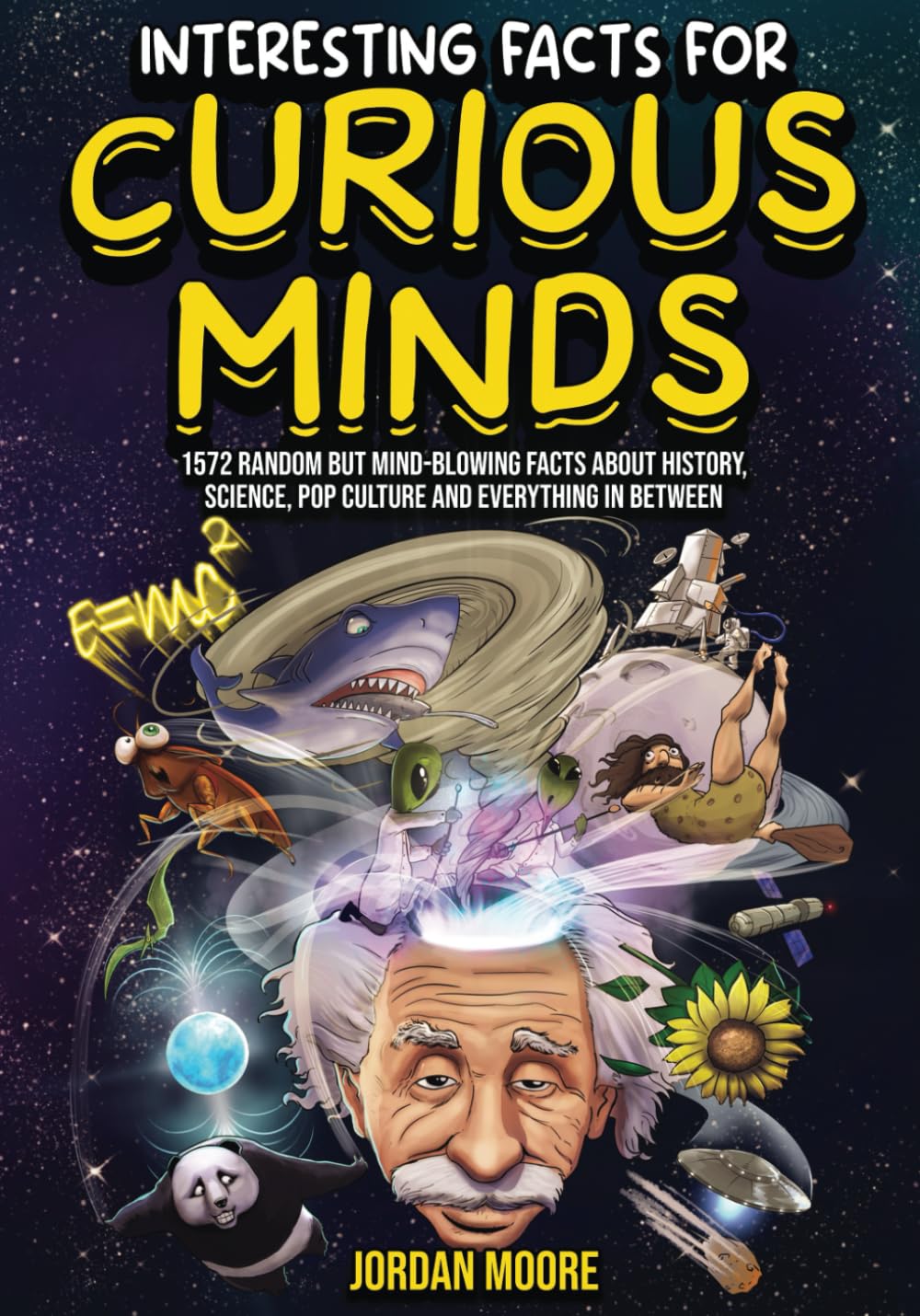
Interesting Facts For Curious Minds: 1572 Random But Mind-Blowing Facts About History, Science, Pop Culture And Everything In Between
Out Of The Water And Into The Frying Pan
byOut of the water and into the frying pan, fish have long been a part of both nature’s ecosystem and human culinary traditions. Among the diverse array of fish species, the whale shark stands out as the largest fish in the world, capable of growing up to 50 feet in length. Despite its name, which includes “whale,” it is entirely a fish and not a mammal. These gentle giants are often mistaken for whales due to their size, but their classification remains firmly within the fish family. The whale shark’s size and migratory patterns make it one of the most fascinating and enigmatic species in the aquatic world, showing the vast range of life beneath the sea.
Throughout history, fish have not only provided sustenance but have also become part of cultural traditions. In 1960, Chicago Mayor Richard J. Daley gave 18 bluegills, the state fish of Illinois, to the crown prince of Japan, inadvertently causing the species to spread and become an invasive one in Japan’s ecosystems. This event highlights the role of fish in both local ecosystems and their potential for global impact. In various cultures, the consumption of fish is steeped in tradition, such as the Catholic practice of eating fish on Fridays during Lent, which dates back to the Middle Ages. Interestingly, animals like beavers and alligators were excluded from this practice, adding an unusual twist to dietary customs.
Fish species also show remarkable diversity, and many of them are important for both ecological balance and human consumption. The beluga sturgeon, for example, holds the title of the largest freshwater fish, growing up to 24 feet long and weighing as much as 2,500 pounds. This fish is only found in the Caspian and Black Sea basins, and its massive size makes it a symbol of the world’s deep-water ecosystems. Despite their grandeur, these fish are at risk, as overfishing and habitat destruction threaten their populations. Furthermore, the muskellunge, or “muskie,” is another example of an impressive freshwater predator. Known for its ferocity and occasional attacks on swimmers, the muskie epitomizes the harsh, competitive nature of aquatic life.
The world of fish also reveals some fascinating facts about their biological processes. For instance, fish breathe by extracting oxygen from the water through their gills, a highly specialized adaptation to their aquatic environment. Interestingly, unlike mammals, most fish do not have eyelids. Instead, they undergo a rest cycle where their brain activity and metabolism slow down, which helps conserve energy. These physiological traits are crucial for survival in the water, where energy efficiency plays a significant role in the fish’s ability to thrive in a constantly moving environment.
The history of fish and their cultural significance also extends into language and myth. The term “fishkill,” often thought to refer to mass deaths of fish, actually comes from the Dutch word “kill,” which means creek or stream, so it refers to “fish creek.” Additionally, in Japanese mythology, the giant catfish Namazu was believed to live underground and cause earthquakes. This myth, tied to Lake Biwa, reflects the deep cultural reverence and intrigue surrounding fish in various societies. This fascination is not limited to mythologies, as the study of fish, known as “garbology,” reveals just how deeply intertwined human life has been with aquatic creatures throughout history.
In the world of fishing, the term “pan fish” refers to smaller species that are easily cooked in a frying pan, such as sunfish, crappies, and perch. These fish are popular for recreational fishing and are often cooked fresh after being caught, especially during the tradition of shore lunches in North America. These meals typically involve frying the day’s catch over an open fire, turning simple fishing trips into communal events where the fruits of the water are celebrated. This tradition emphasizes the importance of fishing as both a practical skill and a cherished pastime.
Beyond the recreational aspects, fish also hold educational and ecological significance. The coelacanth, a species once believed to be extinct for over 65 million years, was rediscovered in 1938 off the coast of South Africa. This discovery amazed the scientific community, offering a rare glimpse into the distant past and highlighting the adaptability of certain species. Meanwhile, fish that gather in large groups for mating or protection are said to be “shoaling,” while synchronized movements form a “school” of fish, showcasing the social behaviors of aquatic life. These behaviors are not only fascinating to observe but also provide valuable insights into the evolution and social structures of marine species.
Fish are integral to the planet’s biodiversity, and their role in ecosystems is crucial. The adaptability of species like sharks, which give birth to live young instead of laying eggs, demonstrates the complexity of aquatic life. Seahorses, unique among fish, swim upright and are known for the male’s role in carrying and giving birth to the brood. This unusual reproductive method further highlights the diversity of life in the oceans and the unique evolutionary paths that fish have taken. As humans continue to rely on fish for food, research, and recreation, their importance as a resource and cultural symbol remains undeniable, and efforts to preserve their habitats will be crucial to ensuring their survival for future generations.

